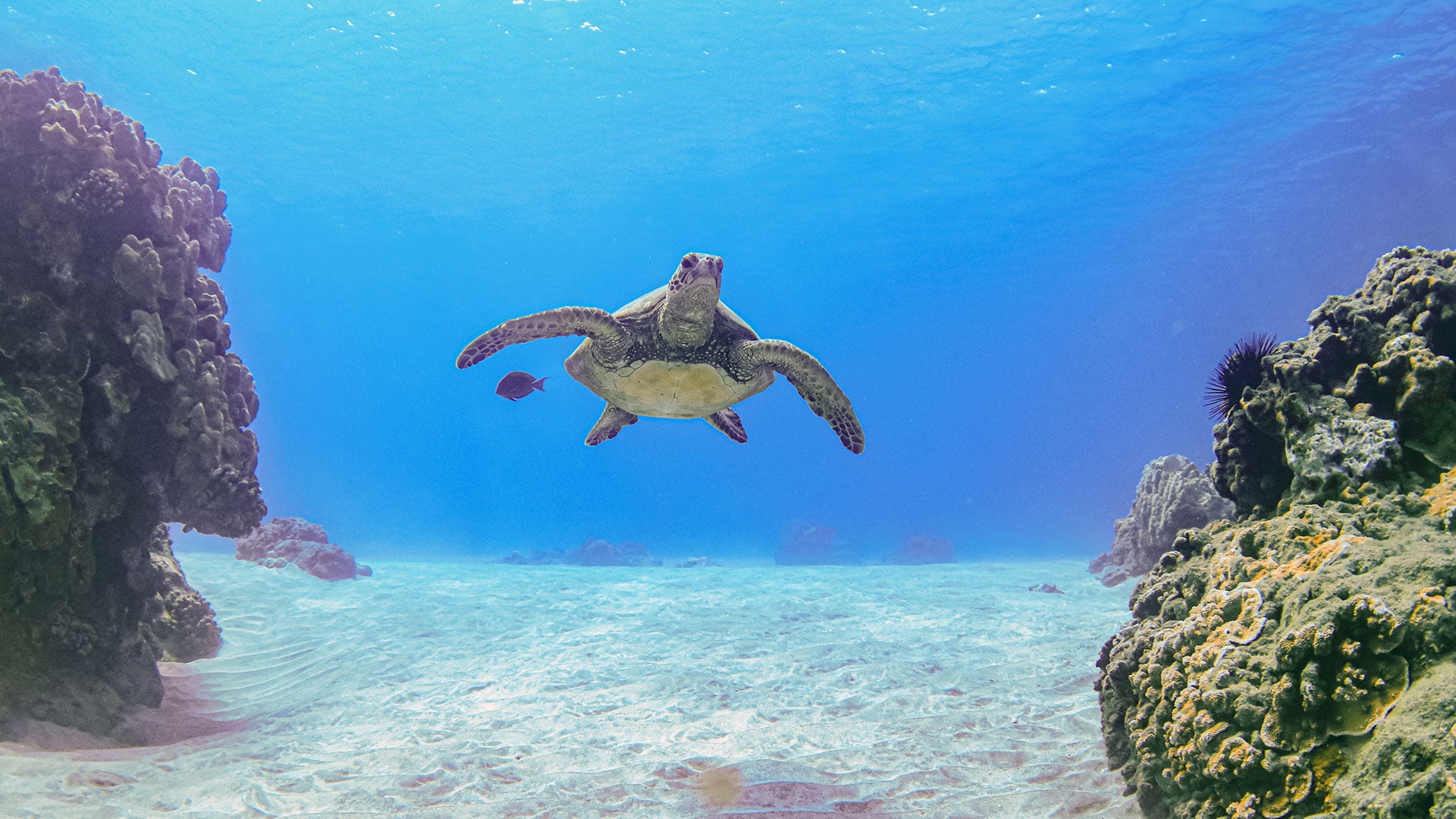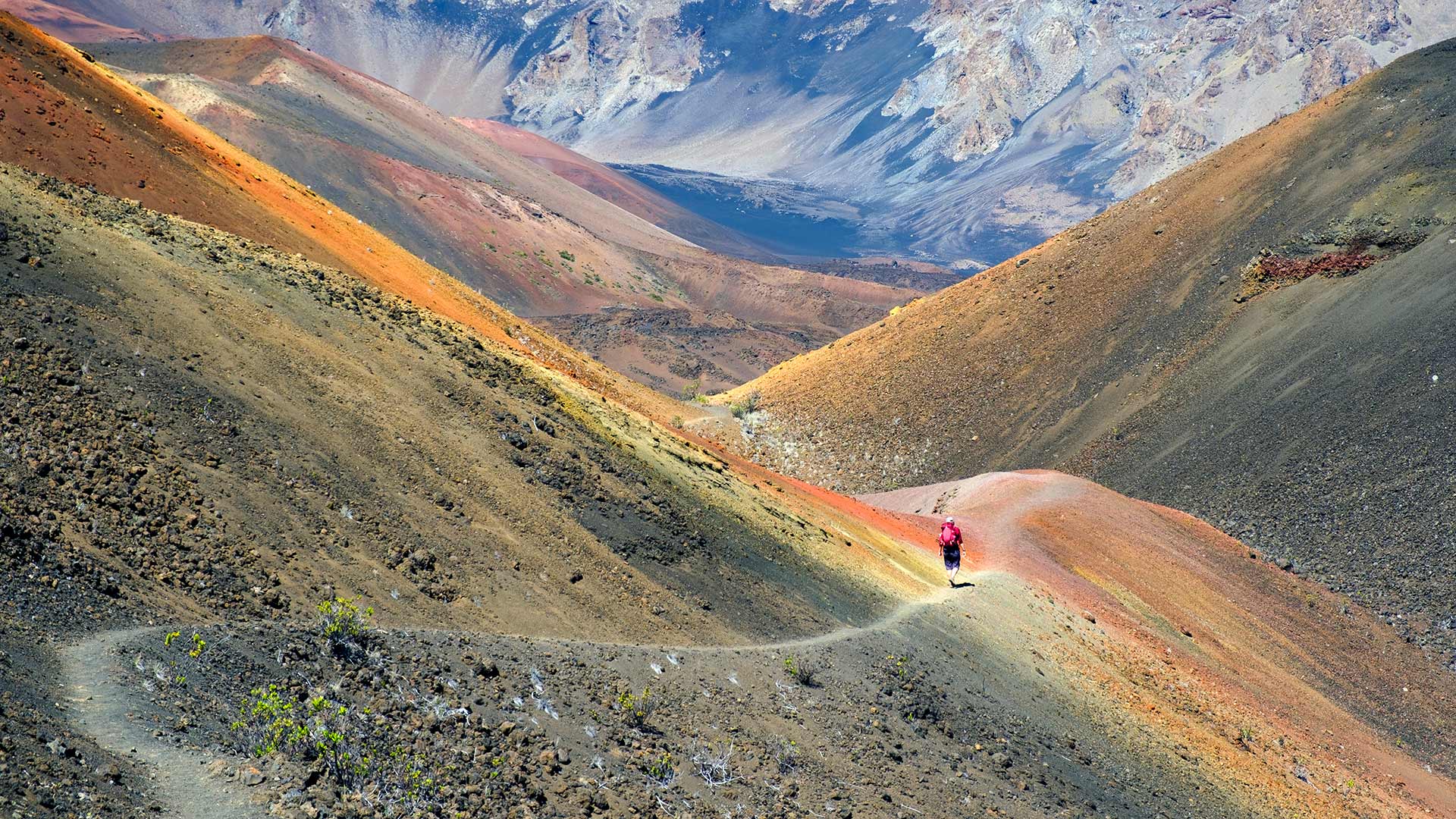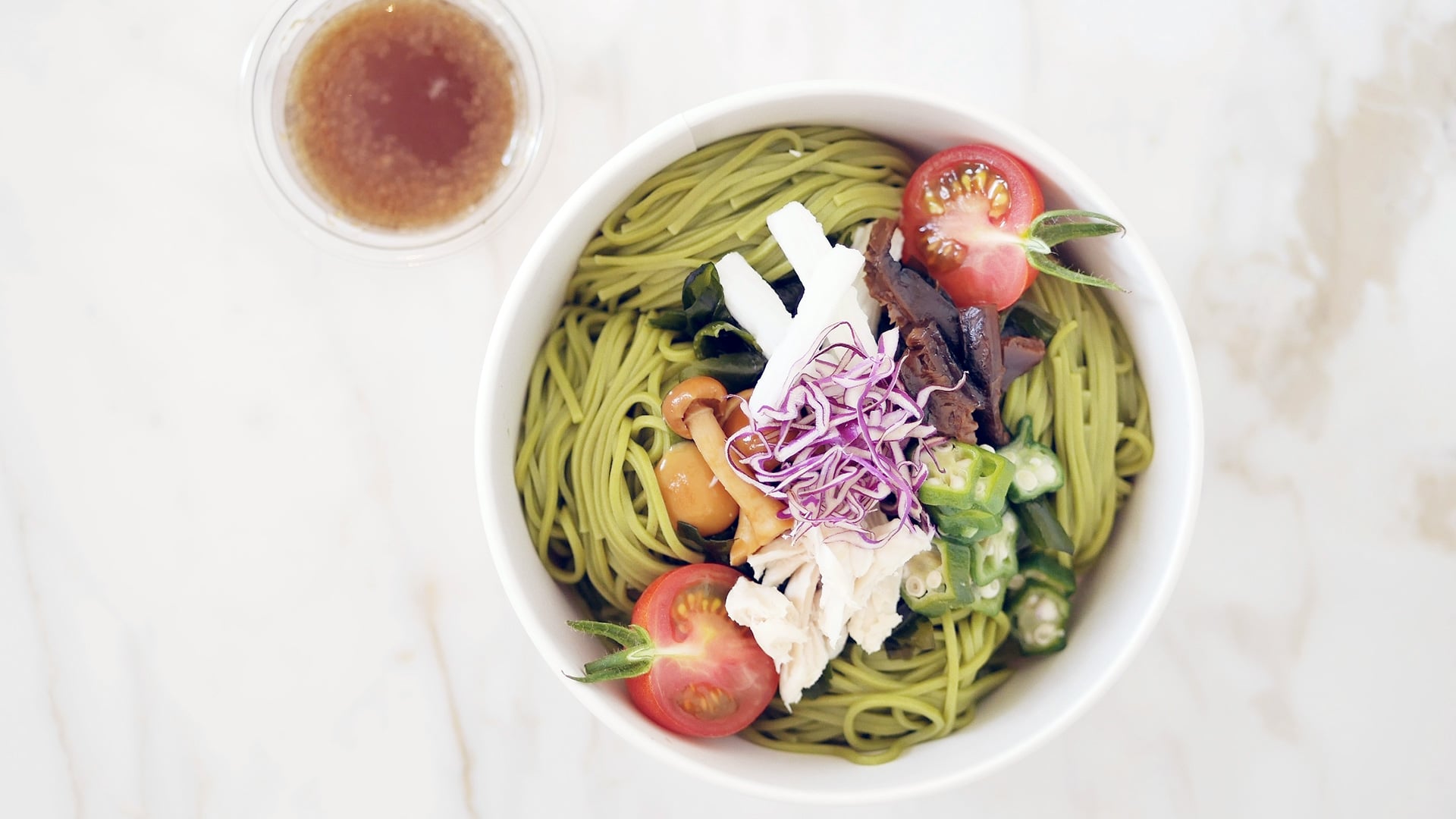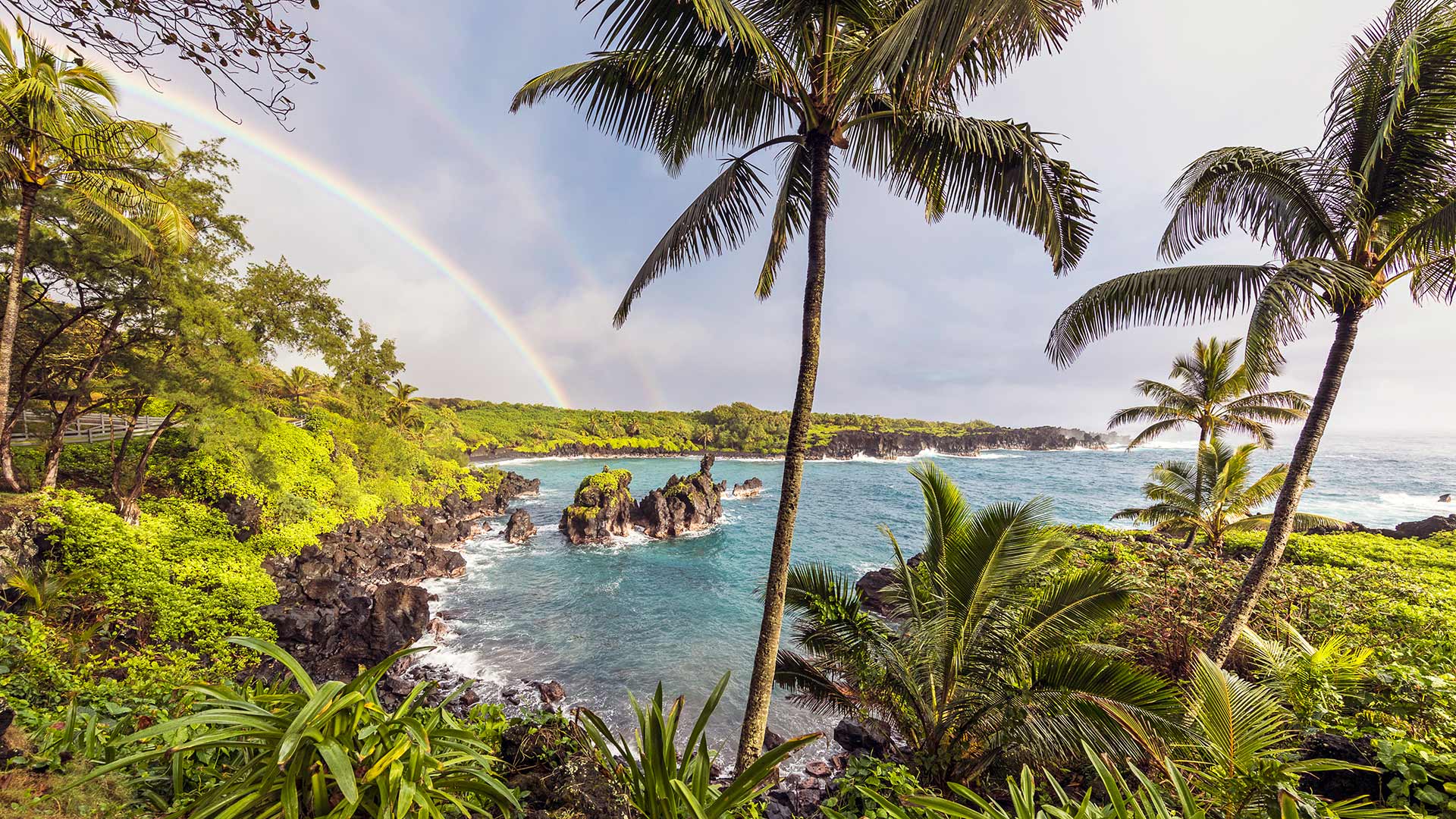The second-largest Hawaiian island, Maui beckons travelers with beauty above and below its sparkling waters, from sun-soaked beaches and waterfall-laced valleys to vibrant coral reefs and volcanic mountain trails. While decadent resort spas and ambitious restaurants showcase contemporary trends, rural towns reflect Maui’s rich multicultural heritage and laid-back ambience.
The Native Hawaiian tradition of hookipa (hospitality to the stranger) and the island’s aloha spirit have encouraged many visitors to return year after year. Luxury travelers can support the island’s regenerative travel movement, which promotes the restoration of natural areas and cultural sites and also embraces the Hawaiian concept of Travel Pono — a type of mindful travel that respects local customs, as well as the environment.
As always, check for travel guidelines and closures before planning your trip.
Friday: Under and by the Sea

Snorkeling is best experienced in the mornings here, so book a sunrise tour with family-owned outfitter Kai Kanani and head to Molokini, a crescent-shaped volcanic crater two miles off the coast of Maui’s south shore. This protected area is home to a diverse ecosystem that includes more than 250 species of colorful fish, plus eels, green sea turtles, spotted eagle rays and craggy, undulating corals.
Be sure to wear a rashguard or mineral sunscreen, since Maui has banned reef-harming chemical sunscreens. No decisions are needed about breakfast, though: This deluxe catamaran excursion includes local coffee, fresh pastries, yogurt and fruit before snorkeling. Afterward, refuel with eggs, breakfast sausage and potatoes, plus an open bar with tropical mimosas and bloody marys.
You return to Maluaka Beach in Makena before 10 a.m., giving you time to freshen up before a free Hawaiian language and culture class at the Wailea Beach Resort – Marriott, Maui, one of many complimentary cultural activities offered during the week (sign up here).
Stick around for lunch at the hotel’s poolside, ocean-view KAPA Bar & Grill, with salads featuring produce from “Upcountry” Kula and sandwiches made with cornmeal-dusted mahi-mahi or seared ahi.
After lunch, you can savor views of Molokini and the islands of Kahoolawe and Lanai on the paved, 3.2-mile round-trip Wailea Beach Walk, right in front of the Wailea Beach Resort – Marriott, Maui. Look for spouting humpback whales in winter and take a break anytime to dip your toes in the water or sprawl in the sand of Ulua, Wailea and Polo beaches en route.
For dinner, reserve a table at Lineage in the Shops at Wailea. Founded by “Top Chef” fan favorite Sheldon Simeon, and now entrusted to executive chef Emmanuel Eng, this stylish spot serves Asian-inspired dishes celebrating the diversity of local ingredients and a cooking style that embodies Maui cuisine.
The open-air mall stays open until 9 p.m., so you can browse its designer boutiques, local retailers such as KaiAloha Supply and art galleries featuring Maui artists.
Saturday: Explore Haleakala National Park

After a hearty breakfast of French toast or loco moco (a Hawaiian breakfast dish of rice topped with eggs, a hamburger patty and gravy) at Kihei Caffe, it’s worth taking a couple of hours to drive to Haleakala National Park, named for the volcanic mountain that extends from central Maui to the island’s southeast coastline.
On a clear day, the view from the 10,026-foot peak of Haleakala (Hawaiian for “House of the Sun”) is breathtaking. The nearly 14,000-foot summit of Mauna Kea on the distant Island of Hawaii rises in the south, while scrubby red Kahoolawe and green-topped Lanai hover in the west. Bring a jacket for the colder weather at this elevation.
The national park spans 30,000 acres and offers numerous trails through several distinctive terrains and microclimates — but no food or drink, so stop at Pukalani Superette on your way up to buy provisions for a picnic.
As the road corkscrews ever higher, keep an eye out for the gray and black nene, an endangered goose that’s also the official state bird of Hawaii. To protect the pristine landscape, please stay on the trails and avoid stepping near the highly endangered Haleakala silversword, a spiky, silvery-haired plant that blooms only once before dying.
While the whole mountain is considered sacred to the Native Hawaiian people, the crater is especially revered. With its eerily beautiful volcanic landscapes, it’s known as one of the quietest places on Earth. Follow the park rules to keep your noise to a minimum, too.
Along the Hosmer Grove Trail, an easy 0.6-mile loop through a nonnative eucalyptus forest and native shrubland, listen for the sounds of indigenous birds. You may also catch a glimpse of the yellow-green amakihi and bright red and black iiwi and apapane as they hunt for nectar in tree blossoms.
A 1.1-mile hike on the Halemauu Trail leads through more shrubland and forest to a spectacular view of the crater, with a natural land arch known as the Rainbow Bridge another quarter-mile down the path. The trail then narrows and twists sharply as it descends another mile to the crater floor.
Closer to the summit, the 11-mile Keoneheehee (Sliding Sands) Trail descends more gradually as it winds past red, gray and black cinders; cinder cones; and a deep volcanic pit. It’s only a half-mile round trip to the first dramatic overlook, too. But whatever trail you choose, be sure to plan your hikes so you don’t have to head down Haleakala Highway in the dark.
For dinner, reserve a late seating at family-owned Cafe O’Lei at the Plantation, where recycled sugar-mill machinery serves as sculptural elements around a small lake at Maui Tropical Plantation. Try the local-style oxtail soup with crushed peanuts or the chef’s catch with local farm vegetables.
If you’re in need of a nightcap, the Pint & Cork at the Shops at Wailea has last call at midnight and an impressive variety of local beer, craft cocktails, wines and spirits.
Sunday: A Taste of Small-Town Heritage

Start your morning in historic downtown Wailuku with an expert espresso and breakfast wrap at Wailuku Coffee Company.
Don’t be late for your reserved entry to Iao Valley State Monument, a few miles down the road and the scene of a bloody battle in 1790 between conquering King Kamehameha and Maui’s ruling chief, Kahekili. A short but uphill paved trail leads to an enchanting view of the foliage-covered rock formation known as the Iao Needle, which rises dramatically from the narrow, forested valley. Walk through a botanical garden and down to the burbling Iao Stream for even more serenity.
Next, drive back through Wailuku and Kahului to the town of Paia, the former sugar cane plantation now known as the world’s best windsurfing and kitesurfing destination with a decidedly upscale hippie vibe. Browse shops with locally designed swimsuits, handmade jewelry and art.
Then continue on to Hookipa Beach. Ogle the daredevils skimming across its waves and the green sea turtles who enjoy basking in huddles on the east end of the beach. Note that the law says to give turtles and other marine life a wide berth, so zoom in to take photos rather than approach the wildlife.
Have lunch in a former pineapple cannery in another plantation-era town, Haiku. Colleen’s at the Cannery prides itself on fresh-caught island fish, organic produce and hamburgers made with Maui Cattle Company beef, served in a chic, loft-style dining room.
Continue up rural Kokomo Road another 10 minutes to Makawao, famous for paniolos (Hawaiian cowboys). Today it’s equally known for eclectic boutiques along Baldwin Avenue, but about a half-dozen weekends a year — including the weekend closest to the Fourth of July — Makawao proudly hosts high school rodeos in its Oskie Rice Arena.
Take Baldwin Avenue back down to Paia and stop at the Maui Dharma Center to peek inside the small but eye-catching temple topped with a gold stupa, spin its prayer wheel and walk around the tranquil gardens outside. It was built in 2007, more than a century after Japanese immigrants constructed the ornate Paia Mantokuji Soto Zen Mission down the road.
You’ll pass the latter on the way to dinner (booked well in advance) at Mama’s Fish House, opened in 1973 and treasured by generations of visitors and residents. On its own sandy cove on Kuau Bay, a few minutes past Paia, everything at Mama’s Fish House bespeaks Polynesian hospitality. Lunch and dinner start with an amuse-bouche of house-made poi, while fish entrées list the names of those who caught them. The signature dessert, a “black pearl” of chocolate mousse with a passion fruit center covered in gleaming ganache, arrives in a pastry seashell.
Maui closes up early on Sunday nights, but if you’d still like a nightcap, head to Lima Cocina + Cantina in Paia by 9 p.m. Sip on Latin American cocktails with local flourishes, such as a pisco sour with splash of lilikoi (passion fruit), a lilikoi mojito or sangria with pineapple, as you raise a glass here as part of an informal farewell to the natural beauty and intriguing communities of Maui.
This article was originally written by Dobrina Zhekova.
Marriott recognizes the Hawaiian language’s use of diacritical marks, including the ‘okina and the kahakō. However, because these marks aren’t always accurately rendered by common web browsers, we have omitted them on these web pages. This is in accordance with the Hawaii Visitors and Convention Bureau (HVCB) and its Island Chapters.




